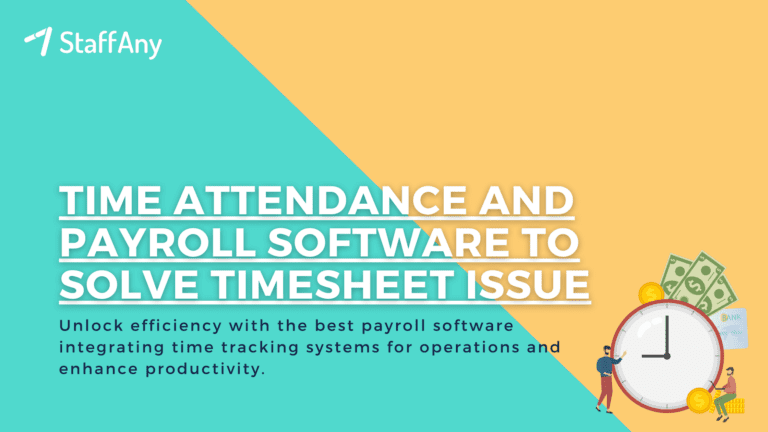Scheduling employees is never an easy thing and is a critical aspect of managing a successful business. By creating well-balanced employee scheduling techniques, employers can ensure optimal productivity, customer satisfaction, and employee morale.
However, the process of employee scheduling can be complex and time-consuming. That’s why we’ve compiled a list of ten best-practice techniques to help you streamline your employee scheduling process and build a better schedule.
From utilising employee schedules software to considering employee preferences and leveraging data analysis, these techniques will empower you to create an effective schedule that meets both your business needs and your employees’ expectations.
Let’s dive into these employee scheduling tips and discover how you can improve your scheduling practices to drive success within your organisation.
What is Employee Scheduling?

Employee scheduling techniques refers to the process of organising and managing the employee shifts and tasks of a group of employees within an organisation. It involves determining when and where employees will work, assigning specific tasks or roles, and ensuring adequate coverage to meet operational needs.
The primary objective of scheduling employees is to create a well-structured and balanced work schedule that optimises productivity, minimises labor costs, and maintains employee satisfaction.
By efficiently allocating resources, businesses can ensure that the right employees with the appropriate skills and availability are scheduled at the right times.
How to schedule employees effectively takes into account various factors, such as the nature of the work, customer demand, employee availability, and labour laws or regulations.
It requires careful planning, coordination, and communication to create a schedule that meets both the organisational requirements and the individual needs of employees.
The Best Employee Scheduling Techniques to Build a Better Schedule
Creating an efficient and balanced employee schedule can be challenging. However, by following these ten best-practice employee scheduling tips, you can streamline the scheduling process and enhance overall productivity:
1. Define Clear Shift Requirements
The first steps of employing effective employee scheduling techniques is by clearly defining the specific requirements for each shift. Consider factors such as workload, skill sets, and employee availability. This will help ensure that the right employees are assigned to the appropriate shifts, minimising disruptions and maximising productivity.
2. Implement Flexible Scheduling Options
Offering flexible scheduling options can greatly improve employee satisfaction and work-life balance. Consider implementing techniques such as staggered start times, compressed workweeks, or remote work arrangements. This flexibility can help accommodate individual preferences and improve employee morale.
3. Utilise An Employee Scheduling App
Invest in reliable employee scheduling software to streamline the scheduling process. These tools offer features like shift templates, automated shift swaps, and real-time updates. By automating repetitive tasks, you can save time and reduce scheduling errors.
4. Consider Employee Preferences and Availability
Take into account employee preferences and availability when creating schedules. Incorporating their input helps increase job satisfaction and reduces the likelihood of last-minute shift changes or conflicts. Regularly communicate with employees to understand their availability and accommodate their needs as much as possible.
5. Use Forecasting and Data Analysis
Leverage historical data, sales forecasts, and customer demand patterns to create accurate schedules. By analysing trends and past performance, you can anticipate busy periods and allocate resources accordingly. This data-driven approach ensures optimal staffing levels and minimises understaffing or overstaffing issues.
Read more: Mastering Food Service Management: Strategies for Success
6. Implement Rotation and Cross-Training
Rotate employees across different shifts and tasks to prevent monotony and enhance skill development. Cross-training employees on various roles enables you to create a more flexible workforce, allowing for smoother scheduling and better coverage during peak times or employee absences.
7. Allow for Self-Scheduling
Consider implementing self-scheduling options, where employees have some control over their schedules within certain parameters. This empowers them to take ownership of their work-life balance and fosters a sense of autonomy and responsibility. Self-scheduling can reduce absenteeism and improve employee satisfaction.
8. Plan for Overtime and Rest Periods
Ensure compliance with labour laws and regulations regarding overtime and rest periods. Avoid overworking employees excessively or violating legal requirements. Properly managing overtime can prevent burnout and maintain a healthy work environment.
9. Communicate Schedule Changes Effectively
Establish clear communication channels to notify employees about schedule changes promptly. Utilise digital platforms, email, or employee scheduling apps to ensure everyone is informed about any modifications or updates. Transparent communication helps minimise confusion and improves overall schedule adherence.
10. Regularly Evaluate and Adjust the Schedule
Continuously monitor and evaluate the effectiveness of the schedule. Seek feedback from employees and supervisors to identify areas for improvement. Adjust the schedule as needed to optimise performance, meet changing business requirements, and address any emerging issues.
Read more: Understanding How to Make a Shift Roster
Common Challenges in Employee Scheduling
In order to make employee scheduling techniques you employ more efficient, you need to understand the challenges usually faced. These challenges include:
1. Employee Availability
Managing the availability of employees with different shift preferences, part-time or full-time status, and time-off requests can be complex. Scheduling conflicts may arise, requiring careful coordination and communication.
2. Shift Coverage
Ensuring adequate coverage for all shifts, including nights, weekends, and holidays, can be a challenge. It requires balancing employee preferences, skill requirements, and operational needs.
Read more: Graveyard Shift: Meaning, Advantages, and Disadvantages
3. Unexpected Changes
Unforeseen events, such as employee absences, emergencies, or changes in customer demand, can disrupt the schedule. Quick adjustments and effective communication are necessary to maintain smooth operations.
4. Compliance with Labor Laws
Adhering to labour laws, such as regulations regarding maximum work hours, breaks, and overtime, is crucial. Failure to comply can result in legal consequences and team members dissatisfaction.
5. Technology and Tools
Choosing the right employee scheduling software or tools and ensuring that employees are trained to use them effectively can be a hurdle. Implementing automated solutions can simplify the scheduling process but requires investment and adaptation.
Employee scheduling plays a vital role in managing human resources effectively and optimising productivity within an organisation. Implementing effective employee scheduling techniques and tools can lead to increased productivity, improved employee satisfaction, enhanced customer service, and cost optimization.
Ready to streamline your employee scheduling process and optimise productivity? Discover the power of StaffAny’s employee shift scheduling software. With its advanced features like shift templates, schedule with one click, and real-time updates, StaffAny makes scheduling a breeze. Say goodbye to scheduling conflicts and communication gaps, and say hello to a well-organised and efficient workforce. Take the first step towards simplified scheduling and watch your business thrive with StaffAny!











